2013 Toyota Tundra Service, Tires & Repairs
Get Started
Complete Auto Care for Your 2013 Toyota Tundra
-
TIRES FOR YOUR 2013 Toyota Tundra View Tire Info GET TIRE PRICING
-
REPAIR FOR YOUR 2013 Toyota Tundra View Repair Info SCHEDULE REPAIR
-
MAINTENANCE FOR YOUR 2013 Toyota Tundra View Maintenance Info SCHEDULE MAINTENANCE
-
OFFERS FOR YOUR 2013 Toyota Tundra Limited Time Tire Offers VIEW ALL COUPONS
2013 Toyota Tundra Tires
Recommended Tires | Tire Information
2013 Toyota Tundra Tires Sizes, Speed Ratings, and Inflation
Not sure about your 2013 Toyota Tundra tire size? Use the following chart to find information on tire size, speed rating, and inflation.
| Trim Level | Speed Rating | Inflation in PSI F/R | Tire Size |
|---|---|---|---|
| 2013 Toyota Tundra Limited* | H | 30 PSI/33 PSI | P275/55R20 |
| 2013 Toyota Tundra Limited* | T | 30 PSI/33 PSI | P275/65R18 |
| 2013 Toyota Tundra Platinum | H | 30 PSI/33 PSI | P275/55R20 |
| 2013 Toyota Tundra Base* | H | 30 PSI/33 PSI | P275/55R20 |
| 2013 Toyota Tundra Base* | T | 30 PSI/33 PSI | P255/70R18 |
| 2013 Toyota Tundra Base* | R | 50 PSI/50 PSI | LT285/70R17/D |
| 2013 Toyota Tundra Base* | T | 30 PSI/33 PSI | P275/65R18 |
|
2013 Toyota Tundra Limited* Speed Rating: H Inflation F/R: 30 PSI/33 PSI |
|
2013 Toyota Tundra Limited* Speed Rating: T Inflation F/R: 30 PSI/33 PSI |
|
2013 Toyota Tundra Platinum Speed Rating: H Inflation F/R: 30 PSI/33 PSI |
|
2013 Toyota Tundra Base* Speed Rating: H Inflation F/R: 30 PSI/33 PSI |
|
2013 Toyota Tundra Base* Speed Rating: T Inflation F/R: 30 PSI/33 PSI |
|
2013 Toyota Tundra Base* Speed Rating: R Inflation F/R: 50 PSI/50 PSI |
|
2013 Toyota Tundra Base* Speed Rating: T Inflation F/R: 30 PSI/33 PSI |
* Note: these models have different tire sizes depending on vehicle options.
Recommended Tires for Your 2013 Toyota Tundra
What tires are best for a 2013 Toyota Tundra? Check out the following tire brands and types.
 ALENZA AS ULTRA
ALENZA AS ULTRA
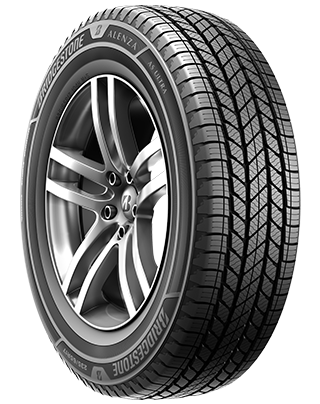
- No warranty
- All-Season
- Light Truck Tires
 Blizzak DM-V2
Blizzak DM-V2
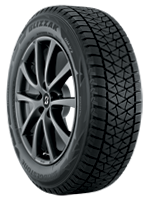
- No warranty
- Winter
- Winter
 DriveGuard Plus
DriveGuard Plus
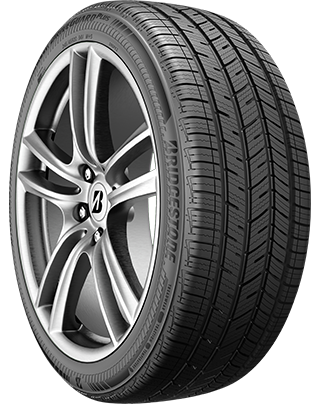
- Platinum Pact Limited Warranty
- All-Season
- Performance
 Dueler H/L Alenza
Dueler H/L Alenza
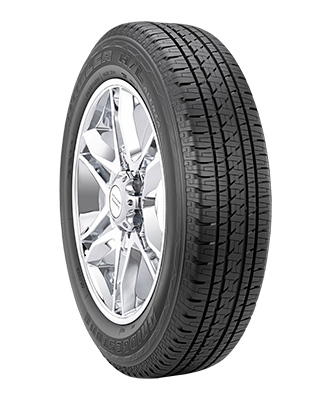
- Platinum Pact Limited Warranty
- All-Season
- Light Truck Tires
 Dueler H/L Alenza Plus
Dueler H/L Alenza Plus
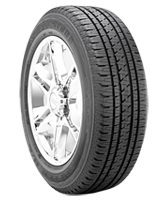
- Platinum Pact Limited Warranty
- All-Season
- Light Truck Tires
 Dueler A/T Revo 3
Dueler A/T Revo 3
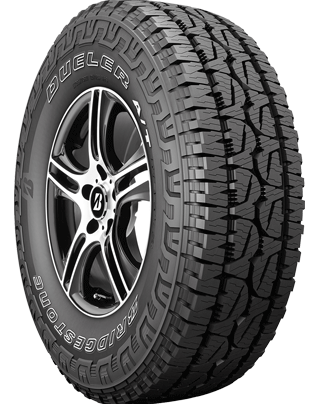
- Platinum Pact Limited Warranty
- All-Season
- Light Truck Tires
 Dueler H/T 684 II
Dueler H/T 684 II
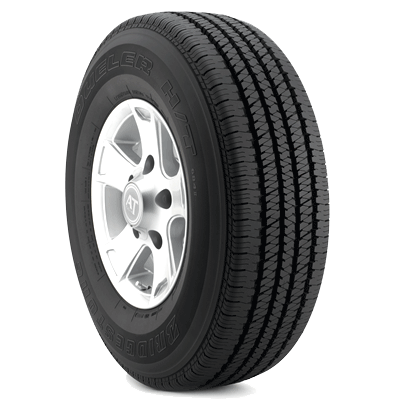
- Platinum Pact Limited Warranty
- All-Season
- Light Truck Tires
 Dueler H/T 685
Dueler H/T 685
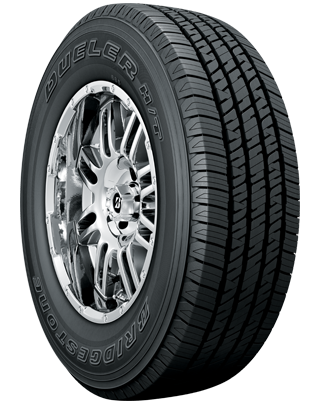
- No warranty
- All-Season
- Light Truck Tires
 WEATHERPEAK
WEATHERPEAK
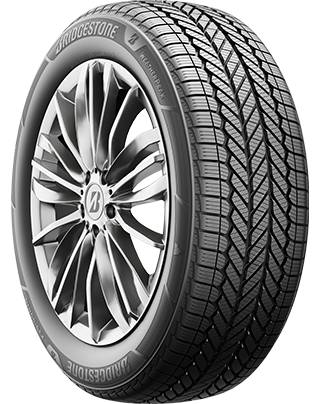
- Platinum Pact Limited Warranty
- All-Season
- Passenger Tires
 Dueler A/T RH-S
Dueler A/T RH-S
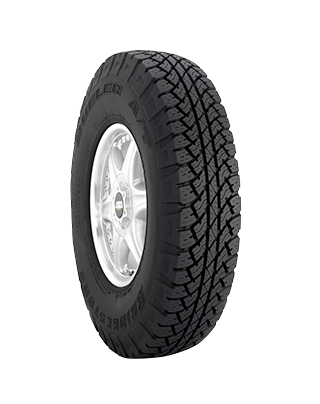
- Platinum Pact Limited Warranty
- All-Season
- Light Truck Tires
 Dueler A/T Revo 3 - LT
Dueler A/T Revo 3 - LT
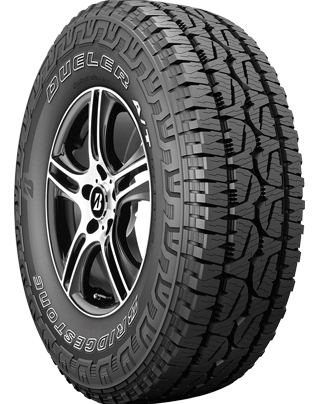
- Platinum Pact Limited Warranty
- All-Season
- Light Truck Tires
 Destination LE3
Destination LE3
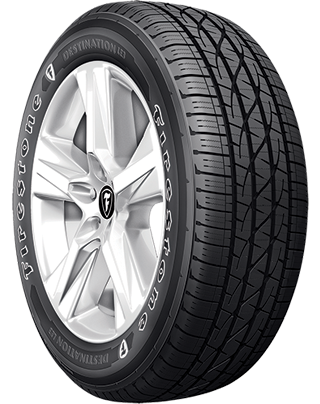
- No warranty
- All-Season
- Light Truck Tires
 Destination A/T2
Destination A/T2
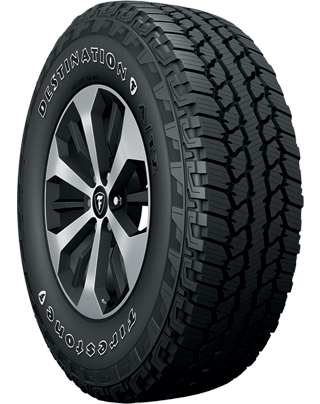
- Gold Pledge Limited Warranty
- All-Season
- Light Truck Tires
 Destination X/T
Destination X/T
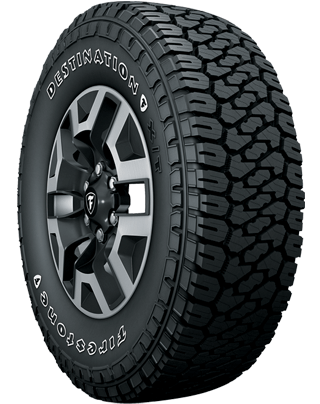
- Gold Pledge Limited Warranty
- All-Season
- Light Truck Tires
 Transforce AT2
Transforce AT2
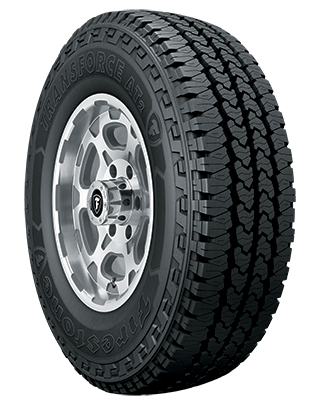
- No warranty
- All-Season
- Light Truck Tires
 Transforce HT2
Transforce HT2
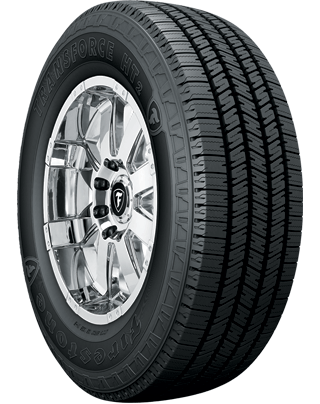
- Gold Pledge Limited Warranty
- All-Season
- Light Truck Tires
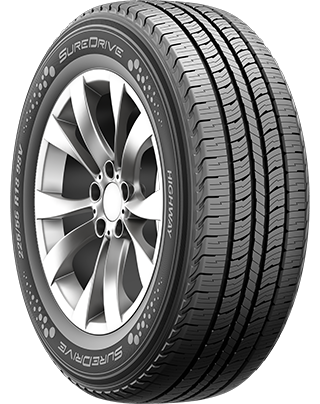
- No warranty
- All-Season
- Light Truck Tires
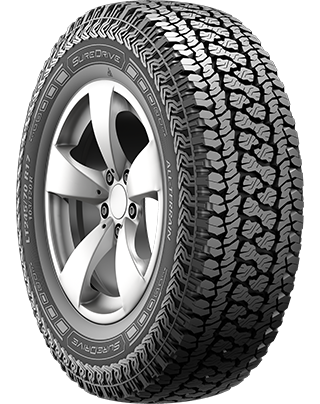
- No warranty
- All-Season
- Light Truck Tires
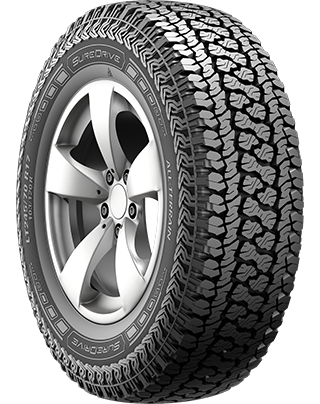
- No warranty
- All-Season
- Light Truck Tires
 PROXES ST III
PROXES ST III
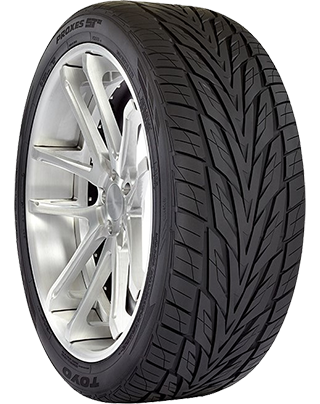
- No warranty
- All-Season
- Light Truck Tires
 OPEN COUNTRY R/T
OPEN COUNTRY R/T
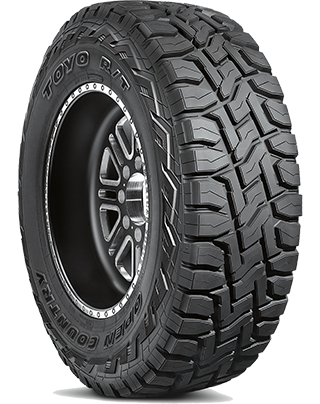
- No warranty
- All-Season
- Light Truck Tires
2013 Toyota Tundra Tire Information
Beyond the correct tire size, you also want to consider a handful of other factors when buying new Toyota Tundra tires like how and where you drive, and how much you want to spend. When evaluating your driving conditions, think about where you live (countryside vs. city vs. mountains) and the kind of unexpected weather you're likely to experience. Drivers in states that fully experience all four seasons often buy two sets of tires: one set for winter, one set for summer. Other drivers buy one set of all-season tires instead. That way they don't have to return to the tire shop and their vehicle is always ready for sun, rain, and light snow!
Driving style is next on the list to think about when buying tires. If you're a diehard off-roader, you have very different tire needs than a highway commuter who doesn't leave the paved path. Browse Toyota Tundra tires online or come to your nearby Firestone Complete Auto Care for help selecting the tire that's right for you.
Toyota Tundra Installation and More
We sell tires, but we also service them and care for all the around-the-wheel components. We're a tire store that also offers professional tire installation, maintenance, and rotation, along with complete auto care. Shop 2013 Toyota Tundra tires online and schedule an installation appointment.
Questions About 2013 Toyota Tundra Tires
-
Why check Toyota tire inflation? A small decrease in tire pressure can have a big impact on your driving. Maintaining proper tire pressure can help improve braking time, increase fuel economy, and boost tire lifespan.
-
What do the tire sidewall numbers mean for my Toyota Tundra? Your tire sidewall numbers tell you the recommended load carrying capacity, speed rating, treadwear, traction, and tire size. Talk to a tire technician to learn how to read Toyota tire numbers.
-
Is there an easy way to check Toyota tire tread depth? Stay on top of your tire tread depth to help avoid a dangerous drive. You can check tread depth with a penny. Hold the penny so that Abraham Lincoln is facing you, then place your penny into a tread groove upside down. If you can see the top of Abe’s head, your tread is shallow and it might be time for new Toyota Tundra tires. Grab a penny. Hold the so that Abe Lincon's head is facing you and his hair is pointing toward the ground. Then, place the penny into a tread groove. If you can see the top of Abe’s head, your tread is shallow and it might be time for new Toyota Tundra tires.
2013 Toyota Tundra Repair
Want more details? Choose a service below to read more about Toyota Tundra repairs at Firestone Complete Auto Care.
About 2013 Toyota Tundra Repairs
For most drivers, the words “car repair” don’t exactly spark excitement. We’re here to change that, though. At Firestone Complete Auto Care, we want to make car repair painless and hassle-free. Bring your 2013 Toyota Tundra in for repair services and our skilled repair technicians will get your Tundra back on the road. We'll work to evaluate the scope of repairs needed and explain your options. If a repair isn't necessary, we won't recommend it.
How Much Are Toyota Tundra Repairs?
Several factors can affect the cost to repair your 2013 Toyota Tundra, including the type of repair, the cost of any replacement parts, the amount of labor necessary to get the job done, and the state you live in. They're updated regularly!
A few different aspects can influence repair costs for your 2013 Toyota Tundra, like
Questions About 2013 Toyota Tundra Auto Repairs
-
Can scheduled maintenance help me avoid repairs? Don’t neglect scheduled maintenance. Sure, you could skip out on a few recommended maintenance services, but you may pay the price later. Bring your vehicle to Firestone Complete Auto Care at recommended service intervals to address minor issues before they get out of hand and keep your car running newer, longer.
-
What's wrong if something feels 'off' in my Toyota? You know your vehicle. You also know when something feels 'off' with your vehicle. Pay attention when things don't run like they used to and stop by for a Courtesy Check when you notice an unusual sign, smell, or sensation. We might be able to help you prevent Toyota Tundra repairs!
-
Why do you recommend certain repairs for my Toyota? Talk to your technician. We'll never recommend a service or repair for your 2013 Toyota Tundra that we don't think is necessary for your safety.
Get Your 2013 Toyota Tundra Brakes Fixed
Your Toyota Tundra engine may be strong and reliable. But if you can't stop it, then it's scrap metal. If you notice your brakes are squeaking or not working well, don’t wait! Safe driving and responsive brakes go hand in hand. What's more, waiting for things to figure themselves out can result in more damage to your brakes and your wallet. Go to your local Firestone Complete Auto Care for 2013 Toyota Tundra brake repairs. We offer a variety of brake services like pad/shoe replacement, rotor/drum resurfacing, brake fluid exchange, and wheel cylinder and brake caliper installation.
Answers to Your Tundra Brakes Questions
-
What is causing my Tundra to shake when I brake? If your Tundra shakes when you brake, you could be dealing with warped rotors, faulty brake calipers, worn brake pads or rotors, or loose or worn suspension parts. Schedule a free brake inspection at Firestone Complete Auto Care for help diagnosing your brake issue.
-
How long can I expect my Tundra brake pads to last? In general, brake pads can last from 30,000 to 40,000 miles. Certain factors, like driving on highways mostly and braking smoothly, can help your brake pads last longer. Hauling heavy loads and riding your brakes can shorten brake pad lifespan.
-
Can brake fluid leak when my Tundra is off? Because your Tundra brake system is a closed hydraulic system, it should not leak brake fluid. However, if components in your brake system have worn out or been damaged, it might cause brake fluid to leak.
Repairing Your Toyota Tundra Drivetrain
You don't want to go to just anyone for drivetrain repair. Drivetrains for front, rear, and all-wheel-drive and 4WD vehicles are all different. You want to come see the technicians at Firestone Complete Auto Care. We can fix many 2013 Toyota Tundra drivetrain components Your Toyota Tundra may need driveshaft attention if you feel vibration as your vehicle accelerates, clunks when shifting, heavy vibrations in your floorboards, or resistance when turning.
2013 Toyota Tundra Drivetrain Questions
-
What are signs my Toyota drivetrain is damaged? Noises toward the back of your Toyota Tundra, leaking fluid, trouble turning — these could all be signs of drivetrain damage you want to address. Take action before something more severe happens.
-
Why is my Tundra malfunction indicator light (MIL) on? A multitude of problems can activate your Tundra’s malfunction indicator light (better known as the check engine light), including issues with the engine, transmission, sensors, electrical system, or connectors.
-
Is a drivetrain malfunction in my Tundra serious? If your Tundra has a drivetrain malfunction, don't wait. Get it checked out by a professional mechanic. Identifying the underlying cause and performing the appropriate repairs right away can help prevent further damage and avoid unsafe driving conditions.
2013 Toyota Tundra Alignment Services
Alignment services involve precise adjustments to your Toyota Tundra’s suspension system, the connection between the vehicle and the wheels. When your car has an alignment service, your tire angles are adjusted according to measurements recommended by Toyota. Why? So that your tires can make contact with the road at the best possible angle. When you bring in your 2013 Toyota Tundra, we’ll perform an alignment check first. If needed, we'll adjust your wheel alignment angles to match Toyota recommendations.
Toyota Tundra Alignment Questions
-
Are there road conditions that can hurt my Toyota Tundra alignment? When it’s safe to do so, avoid driving over potholes or hitting curbs. These road obstacles can wreak havoc on your wheel alignment, as can wear and tear from rough road conditions.
-
How often should you get a wheel alignment for your Tundra? It’s usually suggested you check your alignment about every 6,000 miles or 6 months (whichever occurs first). Still, you should reference your Tundra owner’s manual for Toyota's recommended interval.
-
Do you need to get your Tundra wheels aligned? It’s not mandatory to get an alignment after installing new tires on your Tundra, but it can be a smart decision! Proper alignment from the jump can help improve handling, fuel efficiency, and tire wear.
2013 Toyota Tundra Engine Services
If your 2013 Tundra engine needs repairs, our expert techs will let you know what needs to be done and why before they get started. We never do any work without your sign-off. If a repair can wait, we'll let you know. But if immediate repairs are necessary for your safety, we’ll make sure that's clear, too. We want to give you all the details you need to make an informed decision about your engine repairs. Turn to Firestone Complete Auto Care for your 2013 Tundra engine repairs and you can feel confident knowing that we use Toyota-approved parts and components like the timing belt, oil gasket, fuses, or a different component.
2013 Toyota Tundra Engine Q&A
-
Why does my Tundra’s check engine light come on when I start it? Generally, your check engine light turning on upon ignition is not a bad thing. It’s just your Tundra firing up its circuits. The light should turn off in a bit, but come see us if it doesn't.
-
Are Toyota Tundra engine noises bad? Strange engine sounds can be a sign something’s off in your Toyota Tundra. Knocking or tapping could be a symptom of low oil. A high-pitched whistle could signal an intake leak or misaligned belt. Squealing can be traced back to a loose fan belt, and grinding might be a sign of brake problems rather than engine issues.
-
What could damage a Toyota engine? Certain driving habits can hurt your engine. These habits include driving on an empty fuel tank, revving your engine while the vehicle is in Park, or slamming the gas pedal while the engine is still cold. Steer clear of these habits to help protect engine performance and efficiency.
Get Your Toyota Tundra Tire Repaired
If the road has been rough on your 2013 Toyota Tundra tires, Firestone Complete Auto Care can help. There’s a chance your tire could be plugged and patched (rather than replaced). Our technicians can inspect your tire and let you know if it is safe to repair. We'll start by evaluating the state of wear, the location of damage, type of damage, and the size of the damage.
If your 2013 Toyota Tundra tire puncture can be repaired, we’ll get to work on the steps to fix it: (1) Remove the tire from the wheel for inspection and repair, (2) use a filler to close up the puncture (this is to keep moisture from getting in), and (3) seal the inner liner with a repair unit to prevent air loss.
Your Questions About Toyota Tundra Tire Repair, Answered
-
What happens if I drive my Toyota on a flat tire? Driving on a flat or underinflated tire can put extra stress on your wheels and alignment. While it’s sometimes necessary to drive a short distance on a flat tire to get to a safe place, don’t take any other trips in your Tundra until you can have the flat tire repaired or replaced.
-
Can I use an emergency/temporary sealant to fix my Toyota's flat tire? Fast fixes are a mixed blessing. They’ll help you get your Toyota Tundra to Firestone Complete Auto Care, but don’t count on them to keep you on the road for very long. Using a temporary sealant may also void a Bridgestone or Firestone tire warranty.
-
What can cause Tundra tires to keep losing air? Tire punctures, damaged wheels, and leaking valve stems are possible reasons for your Tundra tires continuously losing air.
Maintenance for Your 2013 Toyota Tundra
Take care of your Toyota Tundra and it'll take care of you. With the right maintenance at the right time, your Tundra has a good chance of hitting 200,000 miles or more.
2013 Toyota Tundra Maintenance Schedule
What is the manufacturer recommended maintenance schedule for a 2013 Toyota Tundra? Find maintenance info for your vehicle.
2013 Toyota Tundra Maintenance Information
Instead of waiting for an issue to arise with your Tundra, you can stay ahead of problems before they even begin. Just follow your 2013 Toyota Tundra maintenance schedule! This recommended maintenance schedule is written by the auto manufacturer, Toyota themselves. Scheduled maintenance services can vary depending on driving conditions, climate, and other factors; in most cases, though, recommended maintenance will consist of services like tire rotations, vital fluid checks/exchanges, filter changes, brake pad replacement, and oil changes. Scheduling routine service appointments is one of the best ways to help extend your Tundra's life, decrease your risk of dangerous malfunctions on the road, and help you avoid expensive repairs caused by 2013 Toyota Tundra problems later.
Overview of Essential Toyota Tundra Maintenance Needs
Come to Firestone Complete Auto Care for manufacturer-recommended routine maintenance on your 2013 Toyota Tundra and a skilled technician will start the appointment with a Courtesy Check. The Courtesy Check helps us see what we’re working with under the hood, and allows us to alert you to any potential problems before they worsen. Every Courtesy Check will include a visual inspection of your Tundra. We’ll check your head and tail lights, fluid levels, filters, tires (and their alignment!), and windshield wiper blades. We’ll also perform a free battery check to determine your battery’s charge level.
Firestone Complete Auto Care is your spot for 2013 Toyota Tundra maintenance. We can help you keep your vehicle (and your life!) running smoothly. Many of our locations have weekend and evening hours for your convenience.
Questions About 2013 Toyota Tundra Maintenance
-
What do I do if I hit a pothole in my Toyota Tundra? Watch out for pothole damage. If your 2013 Tundra is pulling to one side or the other, your tires or suspension system could be calling out for help.
-
When does my Toyota Tundra need high mileage oil? Got 75,000+ miles on the odometer? Consider high mileage motor oil. High mileage oil is formulated to address the specific problems encountered by high mileage vehicles, or those with more than 75,000 miles. It can help reduce oil consumption, smoke, and emissions from older Toyota Tundra engines.
-
Can Toyota dashboard warning lights wait? Because there might be a problem under the hood. Those warning lights are there for a reason! As soon as you notice that one’s illuminated, take your Toyota Tundra to Firestone Complete Auto Care so you can address any small problems long before they worsen.
The Right Battery Size for a 2013 Toyota Tundra
Need more info about Toyota Tundra batteries?
| Battery | Engine | Warranty | Cold Cranking Amps | |
|---|---|---|---|---|
| 24F-3 | V8/4.6L | Replacement 24 months | Performance months | 650 |
| 24F-6 | V8/4.6L | Replacement 36 months | Performance months | 750 |
| 24F-RP | V8/4.6L | Replacement 48 months | Performance months | 750 |
| 24F-3 | V6/4.0L | Replacement 24 months | Performance months | 650 |
| 35-2 | V6/4.0L | Replacement 36 months | Performance months | 640 |
| 24F-RP | V6/4.0L | Replacement 48 months | Performance months | 750 |
| 24F-3 | V8/5.7L | Replacement 24 months | Performance months | 650 |
| 35-2 | V8/5.7L | Replacement 36 months | Performance months | 640 |
| 24F-RP | V8/5.7L | Replacement 48 months | Performance months | 750 |
Car Batteries for 2013 Toyota Tundra
The average car battery lasts three to five years. Don’t get stranded by your Tundra’s car battery. Replace it regularly instead! Look out for symptoms of a faulty car battery. A sluggish engine start, a blinking battery or check engine light, swollen battery case, corroded battery posts, or weak lights can all be signs that your battery is waving goodbye.
Plus, at Firestone Complete Auto Care, we’ll test your battery for free. Drop in for a free battery check and, if necessary, a battery replacement to help keep your 2013 Toyota Tundra running! Car batteries are one of our many specialties! Our technicians are well-acquainted with Toyota’s service specs for Tundra battery cold cranking amps and reserve capacity. Get help choosing the battery size that fits your car perfectly, and schedule a fast car battery replacement at your earliest convenience.
Top Toyota TundraCar Battery Questions
-
Why won't my Toyota Tundra battery stay charged? A battery is in its final hour when it will no longer hold a charge. The battery may be too old. Or, you may have been leaving your car doors ajar and the cabin light at night. Stop by for a complimentary battery check at your favorite Firestone Complete Auto Care and get a handle on your car battery’s health.
-
How long do car batteries last? Car battery lifespan varies depending on a few factors, including driving conditions, accessories, how well it’s maintained, and the type of battery. On average, a car battery lasts about three to five years.
-
Why is there white, crusty buildup on my Tundra’s battery post? The white, flaky stuff that can build up around your Tundra’s battery terminals is known as corrosion. Acid leaking from your vehicle’s battery post can have a chemical reaction with the air, leading to an accumulation of the white, powdery substance over time. Corrosion can affect the flow of electricity between your battery and the electrical system in your Tundra, possibly causing issues with electrical performance and starting. If left unaddressed for long enough, it may even cause your battery to prematurely fail.
2013 Toyota Tundra Oil Change Service
Toyota recommends having your 2013 Toyota Tundra’s motor oil changed at regular intervals. Your Tundra may need an oil change right away if your check engine/oil change light is on, you hear knocking sounds coming from the engine, smell oil inside the car, or see an excess amount of vehicle exhaust. You may also need an oil change more frequently than Toyota recommends if you haul heavy loads, drive in dusty terrain, go off-roading a lot, or drive at low speeds for long distances.
Whether you need high mileage oil, synthetic oil, or conventional oil, you'll find the right 2013 Toyota Tundra motor oil at Firestone Complete Auto Care. Consult Toyota's recommendations to select the right 2013 Tundra oil and talk with a teammate to learn more about our oil options: Quaker State® Advanced Durability™ conventional oil, Pennzoil® High Mileage Vehicle® motor oil, Pennzoil Platinum® Full Synthetic motor oil with PurePlus™ Technology, and Shell Rotella® heavy-duty engine oil. In an oil change service, a technician will change your Tundra's oil, replace and recycle your used oil and oil filter, check all of your other filters, refill vital car fluids, and perform a free inspection on the rest of your vehicle. Let the experts take care of your Tundra’s engine by making an oil change appointment today.
2013 Toyota Tundra Oil Change Questions
-
Why is the oil light on in my Toyota Tundra? If you’re overdue for an oil change, it might trigger your Toyota Tundra oil change reminder light. If the oil pressure light is illuminated, it could be due to low engine oil, a failing oil pump, a malfunctioning oil pressure sensor, or a clogged oil filter.
-
Can I change my Toyota oil on my own? Changing your own oil isn't as convenient as you might think. It requires special tools and old oil must be disposed of properly. Having your oil professionally changed reduces the chances of something going wrong with the oil change, but also with your vehicle down the road.
-
Why is my Toyota exhaust smoke gray or blue? Your engine could be burning oil due to a leak. It may be time for a pro to take a look. A leak can be caused by a variety of issues including faulty valve seals, blown piston rings, or damaged cylinder walls.
2013 Toyota Tundra Engine Tune-Ups & Maintenance
Periodic tune-ups can bring more power back to your Tundra’s engine. Your local Firestone Complete Auto Care offers a range of engine tune-up services for your 2013 Toyota Tundra. The standard Firestone Tune-Up is one service option. It includes a complete visual inspection of engine components, installation of new spark plugs, and a lifetime warranty on parts*. The second service focuses on your Tundra's filters, specifically replacing the air filter and fuel filter. Yet another service is a fuel system cleaning process, which involves removing varnish, dirt, and carbon deposits that have built up inside the fuel injectors, throttle body, and throttle plate in your Tundra. This can improve your fuel system’s performance (and therefore, your engine’s performance). Consider this when choosing a tune-up service for your Tundra: your vehicle’s maintenance record and mileage can determine which service is best. Ask one of our technicians what your vehicle needs, based on your driving habits and your car’s current condition.
*Talk to a Firestone Complete Auto Care teammate for full terms and conditions on warranties.
Questions About 2013 Toyota Tundra Engine Tune-Ups
-
Will it hurt my Toyota Tundra to drive with old spark plugs? When it’s time to replace the spark plugs, don’t delay. These small (but vital!) parts provide the electric spark that your car needs in order to start, and old spark plugs can prevent your car from starting at all. Replace spark plugs on time or about every 30,000 miles or so.
-
What does a puddle underneath my Toyota Tundra mean? Puddles could indicate an oil leak, coolant leak, or brake fluid leak– all of which can critically hurt your engine. Have your engine inspected as soon as you spot a pool of liquid in your usual parking spot.
-
How often do Toyota Tundra fuel injectors need to be cleaned? The frequency at which car fuel injectors should be cleaned can vary depending on several factors, including the type of fuel used and the driving conditions. Some manufacturers generally recommend a fuel system cleaning as part of your general car maintenance, or as needed based on symptoms of poor fuel system performance.
Suspension Service & Repair for 2013 Toyota Tundra
During the first few years you had your 2013 Toyota Tundra, you probably enjoyed a smooth and steady ride. But these days, things are starting to feel a bit rough. Perhaps your Tundra feels bouncy, sways to one side, or makes a weird sound when you drive over a speed bump or turn. The first sign of problems is a good time to bring your 2013 Toyota Tundra in for steering and suspension services. We'll get to the root of the problem and, if your car needs steering and suspension repairs, we'll explain all of your options and the potential cost.
2013 Toyota Tundra Steering & Suspension Questions
-
Why is my Toyota Tundra bouncing excessively? Damaged struts or shocks can't dampen road bumps properly, causing your vehicle to feel like a trampoline after each dip or bump.
-
Why does my Tundra's nose dive down when I hit the brakes? As you brake, the forward momentum of your Tundra combined with its weight sends a ton of force to its front end. A damaged or worn suspension system can cause the front end to compress and dip even further.
-
Does tire pressure and tread depth impact my Toyota's suspension? Keeping your tires properly inflated can help reduce strain on the suspension, and also help you notice when you need new tires. A tire that doesn't have an adequate amount of tread can't grip the road or function as well as the manufacturer intended.
2013 Toyota Tundra A/C Service Near You
Technicians at Firestone Complete Auto Care are ready to help you address your 2013 Toyota Tundra A/C problems. During an A/C performance check, we'll determine the condition of your 2013 Toyota Tundra A/C system to determine whether repair work is needed. This check will include an examination of system pressure, a visual inspection, and a leak test.
While your 2013 Toyota Tundra’s air conditioner is being serviced, we’ll also do an A/C evacuation and recharge. To do this, one of our technicians will remove the refrigerant in your A/C system (if there is even any left to remove). Then, they’ll use Toyota’s specifications to evacuate the system. To finish, we’ll add new refrigerant to recharge the A/C system.
Frequently Asked Questions for 2013 Toyota Tundra A/C Systems
-
Why do I get hot air from my Tundra A/C? If your car’s air conditioning isn’t blowing cold air at all (or it tries, then turns warm), you could have a clogged expansion valve, a faulty compressor clutch, a leak, or a malfunctioning fuse in the system.
-
How does my A/C system get a leak? A/C system leaks are often due to a combination of age and moisture. Rubber seals and gaskets naturally degrade over time, allowing refrigerant to exit and moisture to enter your Tundra's A/C system.
-
What is causing my Tundra’s A/C to only work when the car is in motion? There could be issues with one or more components in the air conditioning or electrical system. Your Tundra may have a faulty cooling fan or low refrigerant.
Transmission Services for 2013 Toyota Tundra
The transmission delivers power from the motor to your wheels so that you can drive at your desired speed. Because your transmission is responsible for converting the right amount of power into the right amount of speed, a small transmission issue can put a big dent in your Tundra’s performance. Toyota Tundra transmission problems can present themselves as shifting delays, grinding when accelerating, the car shaking at any speed, or whistling noises and a burning smell coming from under the hood. Let Toyota Tundra transmission problems linger and your could suffer a loss in fuel efficiency or discover that your Tundra’s not even driveable. Our technicians are trained to service 2013 Toyota Tundra transmission systems according to vehicle manufacturer recommendations. Schedule an appointment at your local Firestone Complete Auto Care at the first sign of transmission problems to help keep your engine running at peak performance.
2013 Toyota Tundra Transmission Q&A
-
Does my Tundra's transmission fluid need to be inspected? Maintaining your Toyota Tundra transmission fluid is one of the best ways to maintain your transmission's health. A general rule of thumb is to have your transmission fluid checked and changed about every 30,000 to 60,000 miles, but that timeline can change if you're hard on your Toyota. Leaks or low transmission fluid are easy to spot and affordable to repair.
-
Can my Toyota Tundra leak transmission fluid? Yes. Toyota Tundra transmission fluid can leak as time passes, which may lead to transmission problems. Transmission fluid leaks are often caused by worn or damaged transmission components, such as the transmission pan, cooler lines, seals, or housing. An overfilled transmission may also be behind your transmission fluid leak.
-
Should I avoid driving my Toyota Tundra if there is a transmission fluid leak? You should avoid driving with a transmission fluid leak. Your transmission system relies on transmission fluid to operate properly, and a leak may decrease performance, cause your Tundra to overheat, or even lead to transmission failure.
Get a 2013 Toyota Tundra Vehicle Inspection
Every service performed at Firestone Complete Auto Care includes a multi-point Courtesy Check. To start, one of our technicians will check the battery in your Toyota Tundra to find out how much charge is remaining on it. We’ll follow the battery inspection with a visual check of your Toyota Tundra’s windshield wiper blades, lights, filters, fluid levels, belts, hoses, tires, and alignment.
We perform a Courtesy Check any time you bring your car to a local Firestone Complete Auto Care for service, but we can also dig deeper and perform a Complete Vehicle Inspection on your 2013 Toyota Tundra if you prefer. In addition to a visual check of everything that's included in a Courtesy Check, a Complete Vehicle Inspection also includes an examination (by hand!) of your steering and suspension system, brakes, and exhaust components. With this inspection, we want to help you stay on top of any issues that may need immediate attention in order to prevent further damage.
Depending on where you live, your local Firestone Complete Auto Care may be able to perform state-mandated inspections or safety tests on your vehicle. Specific requirements for these types of inspections vary by state.
2013 Toyota Tundra Vehicle Inspection Q and A
-
When does my Toyota Tundra need an inspection? You drive your car, day in and day out, so you know it best. If you notice unusual engine noises or you can’t shake the feeling that something is 'off,' start with a Courtesy Check to stay ahead of potential issues.
-
Help! My 2013 Toyota Tundra failed the state inspection test. Can you get it to pass? Don’t panic! Come in for a complete inspection today and we’ll find (and repair) the root cause before you have your vehicle retested.
-
When should I get a complete vehicle inspection for my Toyota Tundra? The best time to have a complete vehicle inspection done on your Toyota Tundra is when you notice something is off but you can’t locate the issue yourself. Schedule an inspection if you experience any unusual symptoms, such as unfamiliar dashboard indicators, strange engine noises, or steering changes. An inspection can be especially beneficial before a road trip for the simple peace of mind. You can feel confident in your adventure!
2013 Toyota Tundra Radiator Service
Staying on top of routine radiator maintenance for your 2013 Toyota Tundra is crucial to keep your engine in the best possible shape for years to come. In fact, Toyota recommends replacing coolant/antifreeze at specific intervals, but you can also take note of any signs your radiator is going bad. You could be on the verge of a radiator-induced engine breakdown if you notice leaking coolant, overheating, or an illuminated low coolant dashboard light.
At Firestone Complete Auto Care, we start by performing a thorough inspection of your Toyota Tundra cooling system. We then do a machine-powered radiator exchange, replenish flushed chemicals, sealants, and lubricants, and then pressure check for leaks. When it comes to radiator service and repair, your 2013 Toyota Tundra is in good hands at Firestone Complete Auto Care.
2013 Toyota Tundra Radiator Q&A
-
What does an illuminated coolant temperature light mean for my Toyota? f the coolant light illuminates on your dashboard, your engine could be overheating. Pull over to a safe area and wait for the engine to cool down. Then, head to your nearest Firestone Complete Auto Care for a coolant system check.
-
Why is my Tundra overheating? Low coolant, a damaged cooling fan, a faulty water pump, a malfunctioning thermostat, or a clogged radiator could all cause your Toyota Tundra engine to overheat.
-
What is making my Tundra radiator sound like it’s boiling or rumbling? Air pockets in your Tundra’s cooling system may cause a rumbling or boiling noise. You could also have a clogged radiator or simply need to replace the radiator cap.